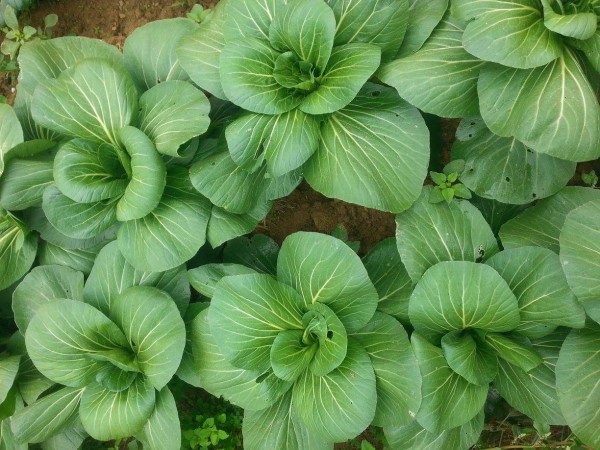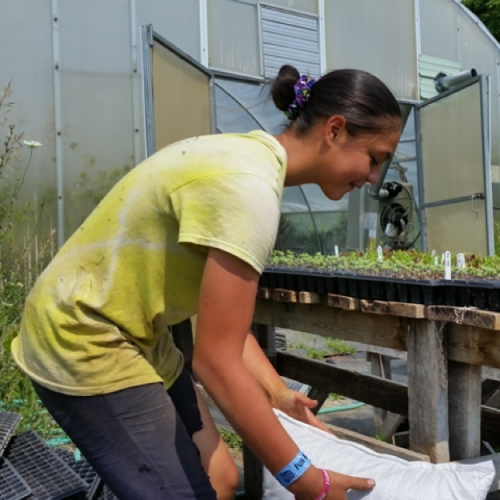-

Erin Donahue -

Christina Barkanic -

Brittany Trott -

Emily Wiley -

Jessica Reilley -

Chris Raines -

Will Nichols -

Emily Reddy -

Michele Marchetti -

Michele Frank -

James Gherardi -

Kit Henshaw -

Christina and Erin -

Kim Tait -

Erin McKinney -

Steve Spanelli -

Sam Komlenic -

Katherine Taylor Grofic -

James Eisenstein -

Jamie Oberdick -

Anna Lombardo -

LacCreta Holland -

Tony Ricci -

Local Food Journey -

Laura Young -

Kristin Camplese -

Harrison's Fresh + Local -

Danielle Matalonis -

Kristine A. -

Linda Weaver -

Naomi Elle Schwartz -

Dana Stuchul -

Cara McShane -

Brittany Smith -

Jessica Illuzzi - Frosty
-

Jessica Paholsky -

James Sechrengost -

Brad Yeckley -

Maya Althouse -

Jordan Reabold -

Kim Chase -

Maria Bryant - Alexandrea Scott
Planting fall crops at Jade Family Farm
Posted by James Eisenstein on 08/16, 2017 at 09:16 AM

Jade Family Farm bok choy
Now is the time to plant seeds for fall crops. No seeding, no fall crops, less fall income, and painful mortgage payment woes. So on July 20, John invited yours truly the Unpaid Field Hand, daughter Evelyn, and nephew Matthew to plant 47 flats worth of seeds on his list. Each flat has 128 cells, and my calculator tells me 128 times 47 comes to 6,016 seeds.
It took the three of us working hard about three hours to go through the process. We used organically certified seed starting mix to which we addd organic fertilizer and mixed in a big tub. Each of the 47 flats needs to be filled loosely to the top of each cell, putting one flat on top of the other and pressing down so there is room to put in the seed, inserting the seed, making a marker with the date and variety for each flat, filling the cells in the seed flats loosely to the top, and watering the seeded flats.
I took some pictures and videos of part of the process to give you an idea of what’s involved. The first shows Evelyn hoisting a 50 pound bag of seed starter into the bin. Matthew was in charge of writing labels with variety and date.

Evelyn pouring seeding mix into tub

Matthew writing labels
The mix in the loosely filled flats next has to be pressed down so the seeds can be covered after sowing, one of Evelyn’s jobs in this short video.
Some seeds, like New Red Fire lettuce, are small and need to be seeded by hand one at a time. It is quite time-consuming, at best over two minutes, longer when things go wrong. Fortunately, most of the seeds planted were either pelletized or big enough to use the vacuum seeder. It’s harder to use it than one would think, but Evelyn has become proficient at it. The video below shows her using it to seed 128 cells in about 40 seconds.
We’re not quite done. The labels need to be put in the flats, the flats taken back out to the tub of starting mix, and the cells loosely covered. Then they go to outdoor tables to be watered.

A loosely filled flat after seeds sown and label inserted
If you buy fall Napa cabbage or lettuce at our Boalsburg or North Atherton farmers market stand or Friends & Farmers On-Line market this fall, you now have some idea of why you can.
![]() Author: James Eisenstein
Author: James Eisenstein
Bio: Unpaid Field Hand at Jade Family Farm | Former Penn State Professor
- Our Local Food Journey comes to an end
- Winter isn’t a quiet time at the farm
- Get the taste of garden season right now by growing herbs indoors
- All you need to know about PASA’s Farming for the Future conference









NO COMMENTS